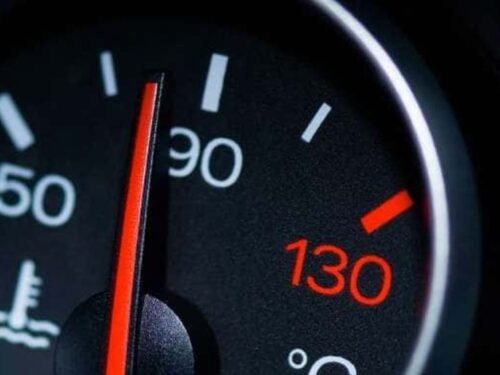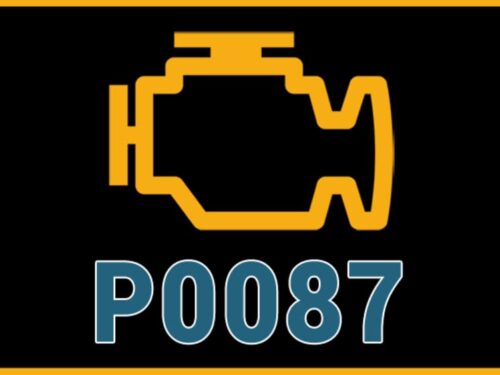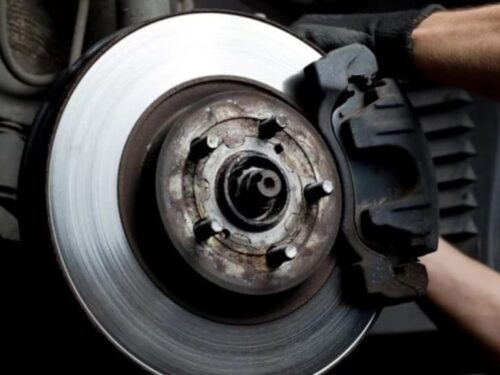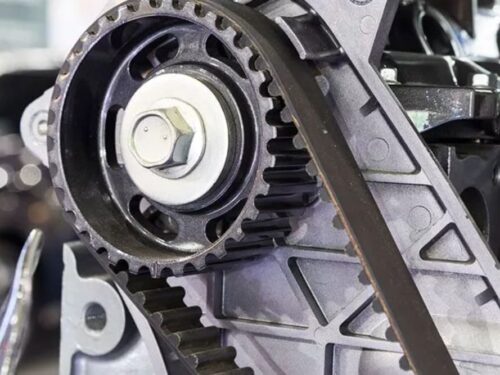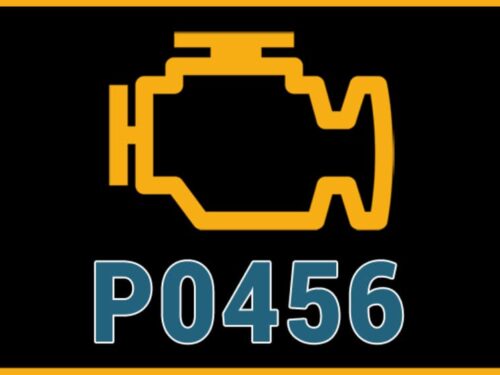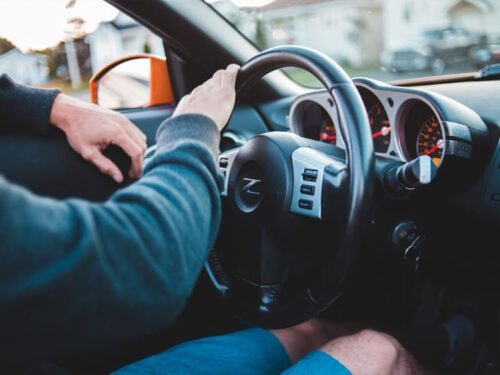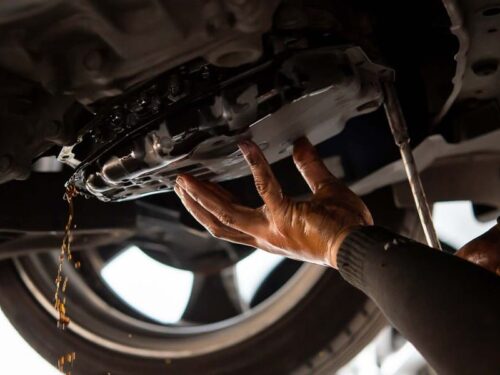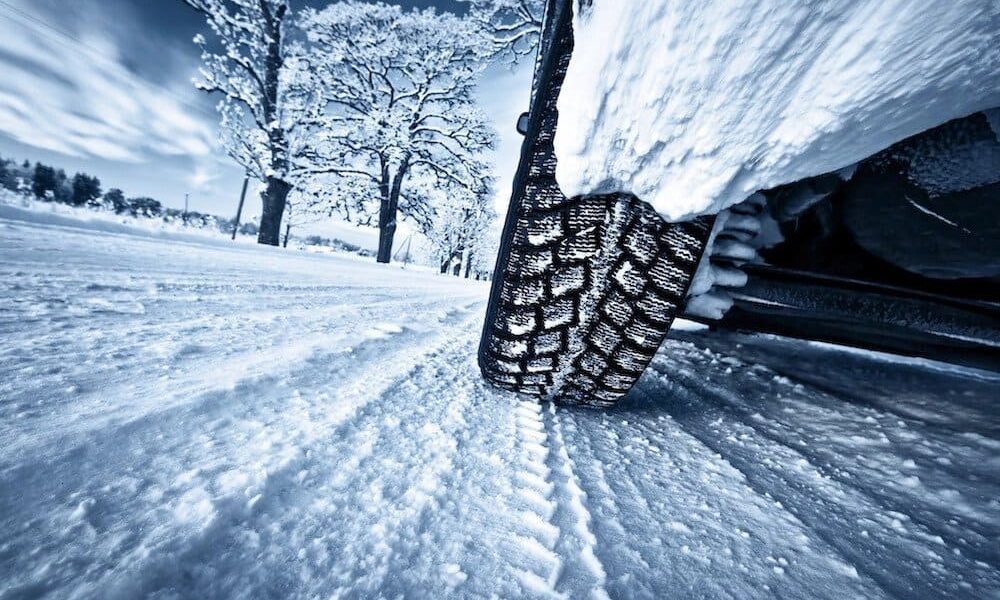
Winter wreaks havoc your vehicle. From temperature drops that affect tire pressure to ice and salt, which can damage a vehicle’s exterior, winter weather causes a lot of wear and tear on cars.
That’s why it’s so important to winterize your vehicle. Preparing your car for winter ensures, first and foremost, safety. After winterizing your vehicle, you can improve stability, visibility, and stopping power. Also, a few winter prep steps can help improve comfort and performance through the cold days of winter.
Thinking about getting your car ready for winter? With the snow right around the corner, now is the perfect time to follow these ten tips for winterizing your vehicle.
1. Check Tire Tread
Worn tires are one of the leading causes of winter automobile accidents. Old, worn-down tires increase stopping time and reduce stability, which is especially true in icy conditions. Start by examining the tread depth.
Here’s how to do it: Measure tread depth with a penny. Place a penny into the tread with Lincoln’s face facing down. If the tread is lower than the top of Lincoln’s head, it’s likely time to replace your tires.
Also, check tire pressure and keep a pressure gauge handy in your car. Tire pressure drops as the weather gets colder. A 10-degree drop in temperature can result in a 1-PSI reduction in weight. Underinflated tires wear more quickly and can result in sliding on icy roads.
- Pro Tip: Consider winter snow tires for your vehicle. Dedicated winter tires are designed to grip the road in icy and snowy conditions.
2. Service Your Battery
Winter weather is your car battery’s worst enemy. In the dead of winter, cold air can drastically reduce the battery’s ability to generate power. That’s why hard starts are more common in cold weather. When the temperature is below freezing, the energy in a fully charged battery drops by half. Similarly, you’ll likely be running the heater and defroster, which puts more strain on the battery.
Ultimately, if the battery’s power is already reduced, you can really run into problems, and in some cases, your car may fail to start. Here a few winter battery tips:
- Check Power – A battery load test will show available voltage, internal resistance, and conductance. A quick test gives you a good idea of the battery’s overall condition.
- Replace If Necessary – It might be time to replace the battery if it’s old, if you notice a lack of startup power, or if you see dim lights and electrical problems.
3. Clean Battery Terminals
Corrosion on the battery terminals causes a lot of problems in the winter. Starting problems, for example, can be caused by this issue. Plus, significant corrosion can impede the charging system’s ability to recharge the battery fully.
You can clean the terminals by disconnecting the battery. A wire brush can free any corrosion, and you’ll also want to remove acid and grease from the battery’s casing. One trick: Use a terminal protectant spray to coat the terminals. This reduces the risk of corrosion in the future.
Before disconnecting the battery, always have a proper memory saver plugged into your vehicle’s DLC. This will verify your memory module settings are not lost. Consequences of the memory saver not being plugged in:
- Up/down features on automatic windows
- Gas mileage data
- sensor calibration data
4. Check Your Brakes
On icy roads, you rely on your brakes to stop. That’s why this is a critical car winterizing step. Inspect the brake pads and rotors; they should be changed if you notice wear. One telltale sign of worn-down brakes is brake noise; if you notice wheezing, grinding sounds, or chirping, it’s best to have your brakes checked.
5. Winterize Your Fluids
The cold weather affects all of your car’s fluids, from the motor oil to the wiper fluid. A winter car tune-up should include:
- Oil Change – Motor oil thickens in cold weather, which can cause several wear-and-tear and performance issues. Adding new winter-blend oil will ensure it’s the right viscosity for winter.
- Anti-Freeze Check – Anti-freeze is a mixture of water and anti-freeze fluid, usually in a roughly 50:50 ratio. If there’s too much water in the mixture, you can run into issues with freezing.
- Wiper Fluid Replacement – Replace your wiper fluid with a blend that contains anti-freeze. A -20-degree wiper fluid is best.
- Brake Fluid – Check brake fluid levels and top off if necessary.
6. Replace Your Wiper Blades
Examine your blades for wear and tear. If you notice cracking, or if your blades leave streaks in the rain, it’s time to replace them.
A rule of thumb: Wiper blades should be replaced at least every year. If you park your car outdoors overnight, look for winter-ready blades that are less prone to cracking.
7. Heating and Cooling Check-Up
You rely on the heater and defroster in winter. That’s why you must make sure the system is ready for the colder weather. Take your vehicle in for a heating system tune-up. This may include:
- Heater Flush – This cleans the heater’s core tubes, and enables it to work more efficiently. If your heater is slow to get warm, dirty core tubes might be the cause.
- Cabin Air Filter Replacement – A dirty cabin air filter stresses the blower and reduces airflow from the heater, and can cause overheating and blower motor failure. Both of these are costly repairs. That’s why it’s a great idea to change this $20 filter.
8. Lubricate Exterior Components
In cold weather, freezing water can seep into locks, door jambs, and window tracks, creating minor annoyances like slow-moving windows. Over time though, these problems can stress window regulator cables, weather stripping, and locks, resulting in costly repairs. Before winter, lubricate and protect these components using a dry lube or silicone spray. Components that should be winterized include:
- Window tracks
- Weather stripping
- Door jambs
- Locks
- Hinges
- Latches
9. Prep the Paint
Winter weather dulls the paint’s shine and can eat into the clear coat. Road salt exacerbates the problem, leaving your car’s exterior susceptible to oxidation and rust. A few tips:
- Wax the Paint – Waxing before winter will add a layer of protection from contaminants, ice, and snow.
- Clean Wheel Wells – Clean the wheel wells regularly to remove any road salt, which can quickly corrode exposed metals.
- Weekly Washes – Regular washes in winter will help prevent rust and remove many rust-causing contaminants.
10. Check Your Headlamps and Taillights
In snow, sleet and freezing rain, visibility are diminished. That’s why it’s so important that all lights are working and clean. Start by checking your vehicle’s front and rear lights; they should all be working correctly. Similarly, check for any fogginess or damage.
Buffing your headlights can remove tough stains and improve visibility while repairing cracked housings will prevent snow and ice from seeping into electrical components.
Additional Tip
It is very important to understand that your windshield wipers are not snow plows. When an excessive amount of ice or snow is blocking the wipers from moving freely, it can damage the wiper linkage and motor. Always remember to turn off your wiper blades when you park at the end of the day. These will come on automatically typically and damage will be caused because sometimes the blades can freeze to the glass.
Courtesy of hollenshades


